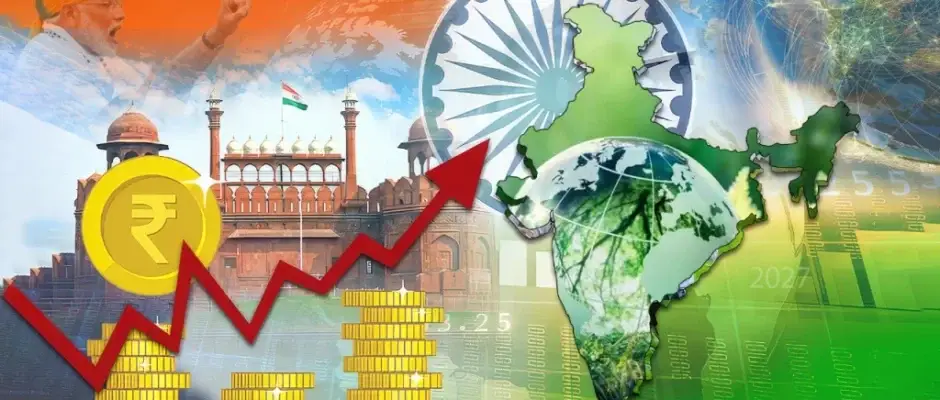Hindenburg 2.0 Could be a Hit Job!
OCCRP purported ‘expose’ may be intended at destabilizing Indian financial markets, steer political conversations, influence Lok Sabha polls Rohan Giri In recent days, a startling narrative has surfaced pointing to an alleged covert plot to target and destabilize Indian financial markets. An organized network of international entities including financiers like George Soros, Rockefeller Brothers, US and European government agencies alongside Organized Crime and Corruption Reporting Project (OCCRP) seem to have made plans to drive the Indian markets including the stocks into an abyss. This conspiracy supposedly involved self-styled well-funded NGOs, media platforms and foreign actors camouflaged as activists and journalists. The reported expose on the anvil dealing with Indian markets and desi conglomerates has all the markings of infamous short seller Hindenburg that ravaged the Gautam Adani led ports to technology group and thereby disrupting the Indian stock markets. Over US $ 115 billion worth investors wealth got washed out after the ‘damning’ report hit the wires. Christened as Hindenburg 2.0 euphemism for second version of short-seller’s report is seen as meticulously orchestrated campaign after India reported a huge success of its moon-landing mission, Chandrayan-3 that was hailed globally. Earlier, Hindenburg Research, a US-based private entity, came up with a report concerning Gautam Adani, a prominent Indian business tycoon. The aftermath of this report resulted in substantial financial losses for Adani Enterprises and those invested or taken exposure in Indian stocks. At heart of this narrative lies a purported plan to mimic a “Hindenburg 2.0 scenario,” aimed at besmirching India’s developmental journey, exploiting fabricated exposés and manipulating the market for speculative as well as designed gains for a few powerful actors with deep pockets and political linkages. A chronological evaluation of events accentuates the narrative’s evolution that seems to be well designed by actors behind the curtain. OCCRP is the forum through which the second version of Hindenburg report is expected to hit the headlines. A cursory look at OCCRP reveals that it’s funded by US Government, Ford Foundation, Rockefeller Brothers, George Soros’ Open Society Foundation apart from some European governments’ agencies. Source: occrp.org The agenda and biases of many OCCRP supporters are well known and documented extensively. OCCRP association and collaboration with certain governments or groups have raised questions on its possible intent, potential alignment with geopolitical interests. The organization’s controversial connections have sparked concerns on its credibility, objectivity and adherence to ethical standards. OCCRP’s agenda, as suggested by their annual reports and team profiles, hints at financial backing from countries’ agencies with potentially concealed motives. A glaring example lies in their portrayal of Kashmir as an independent state signaling an alignment with forces that seemingly oppose India’s growth. Kashmir’s depiction of being separate from India raises concerns about an agenda that potentially seeks to challenge India’s sovereignty. As an investigative journalism platform, it’s incumbent upon OCCRP to provide accurate, balanced and comprehensive coverage on complex issues like the Kashmir. But the organization failed to meet its responsibility. Source: OCCRP Annual Report 2022 As Drew Sullivan, the co-founder of OCCRP, stated, “Combating a network demands the strength of a network.” Given that OCCRP has a particular agenda apart from what’s espoused, it’s crucial to ascertain affiliations of this organization in Indian context as well. Overseeing the operations in South Asia is Anand Mangnale who masquerades as regional editor. Prior to his association with OCCRP, Mangnale was co-founder and director of online crowd funding platform, Our Democracy. Source: occrp.org To begin with, in December 2017, this entity, ‘Our Democracy’ initiated its crowd funding election campaign. The campaign was tailored for Jignesh Mevani, an activist and advocate of Left ideology. Notably, Mevani was an independent candidate for the Banaskantha constituency in the Gujarat assembly elections. Kanhaiya Kumar from Communist Party of Indija and Atishi from Aam Aadmi Party were also beneficiaries of ‘Our Democracy’ funding programme. Anand Mangnale managed to mobilize Rs 70 lakh for Kanhaiya Kumar’s campaign wasRs 70 lakh. Similarly, Atishi’s campaign was also supported with substantial funds. Prior to launch of ‘Our Democracy’ platform, Anand Manganale and his associate Bilal Zaidi collaboratively established a venture named Crowdnewsing. This platform was purportedly a journalistic endeavour. At the height of unrest at Jawaharlal Nehru University in Delhi during January 2020, Anand Manganale managed to infiltrate a WhatsApp group identified as “Friends of RSS,” associated with right-wing sentiments. He immediately took a screenshot to share contents of this group, detailing ongoing events with fellow left-wing activists and leaders to fuel the rioting by latter. Anand Manglani’s actions came to light when journalist-activist Barkha Dutt shared a screenshot on the social media platform “x” (formerly known as Twitter). The screenshot unveiled ongoing conversation within the whatsapp group. Anand Mangnale used this mobile number when he worked with the opposition party, Indian National Congress (INC) for their crowd funding campaign. Given the backdrop, those involved, funding and network of OCCRP, one can offer a plausible insight to possible underlying intentions, motive and potential biases behind the talk of a ‘big expose’ by the organization. Purported report may also be seen in the light of Lok Sabha elections scheduled to be held within the next one year. Emergence of Hindenburg 2.0 narrative can also be construed as a politically motivated manoeuvre to influence the electoral outcomes or at least influence the conversations in run up to the polls. (author is operations manager at Centre for Integrated and Holistic Studies, a non-partisan think tank based in New Delhi)


